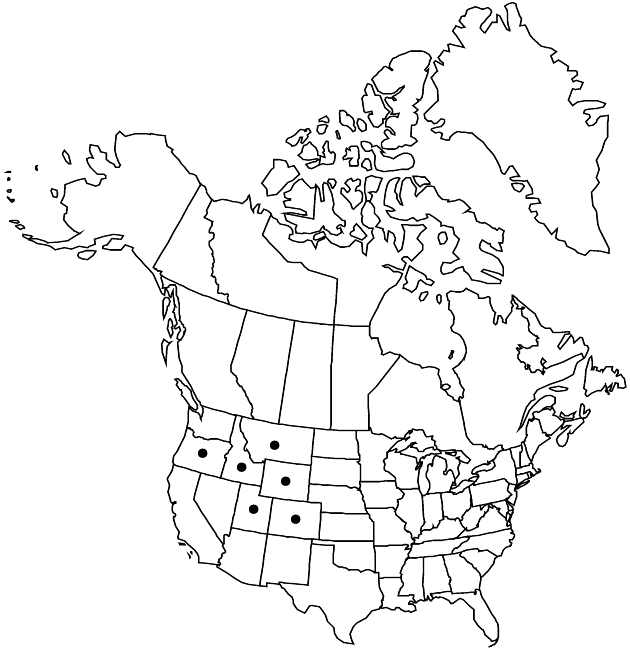Difference between revisions of "Townsendia montana"
Proc. Calif. Acad. Sci., ser. 2, 5: 697. 1895.
FNA>Volume Importer |
FNA>Volume Importer |
||
| Line 55: | Line 55: | ||
|publication year=1895 | |publication year=1895 | ||
|special status= | |special status= | ||
| − | |source xml=https://jpend@bitbucket.org/aafc-mbb/fna-data-curation.git/src/ | + | |source xml=https://jpend@bitbucket.org/aafc-mbb/fna-data-curation.git/src/f6b125a955440c0872999024f038d74684f65921/coarse_grained_fna_xml/V19-20-21/V20_444.xml |
|tribe=Asteraceae tribe Astereae | |tribe=Asteraceae tribe Astereae | ||
|genus=Townsendia | |genus=Townsendia | ||
Revision as of 18:43, 24 September 2019
Perennials, mostly 1–2+ cm (usually ± pulvinate). Stems ± erect; internodes 0.1–1(–2) mm, strigose. Leaves basal and cauline, blades ± spatulate to oblanceolate, 10–35+ × 2–5+ mm, not fleshy, faces usually ± strigose, sometimes glabrous. Heads usually on scapiform peduncles 5–60+ mm, sometimes sessile. Involucres hemispheric to campanulate, 8–15 mm diam. Phyllaries 18–32 in 3–4+ series, the longer ± oblanceolate, 6–9 mm (l/w = 3–5), glabrate, or sparsely strigillose, apices obtuse to acute, abaxial faces glabrous. Ray florets 13–21+; corollas usually white, sometimes pink or blue, adaxially, laminae 6–12 mm, abaxially usually glandular-puberulent, sometimes glabrous. Disc florets 30–60+; corollas 3.5–5.5 mm. Cypselae 4.5 mm, faces glabrous or hairy at bases, hair tips glochidiform; pappi persistent; on ray cypselae 24–30+ subulate to setiform scales 5–6 mm; on disc cypselae 24–30+ subulate to setiform scales 5.5–6.6 mm. 2n = 18, 36.
Phenology: Flowering (May–)Jul–Aug.
Habitat: Meadows, granite and limestone ridges
Elevation: 2000–3100 m
Distribution

Colo., Idaho, Mont., Oreg., Utah, Wyo.
Discussion
Selected References
None.